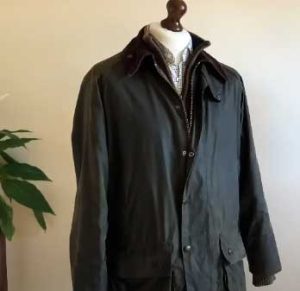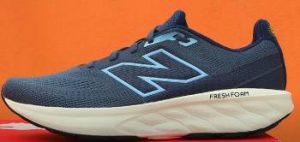Men’s shoe brand Bruno Marc has made a name for itself by offering decent quality leather and synthetic shoes at unusually affordable prices.
But how does the company keep production costs low enough to price shoes significantly cheaper than big athletic and designer brands?
Bruno Marc implements cost reduction across all aspects of manufacturing, materials sourcing, inventory management, marketing, sales channels and product diversity to maximize savings while maintaining satisfactory quality.
Reasons For Bruno Marc Shoes Being So Cheap
Here is a list of those reasons:
- Taking Advantage of China’s Lower Labor Rates
- Substituting Cheaper Synthetics for Premium Materials
- Minimal Advertising Investment and Simple Web Marketing
- Classic Versatile Styles With Long-Lasting Appeal
- Direct Online Sales Remove Multi-Layer Retail Markups
- Constrained Variety Minimizes Component Inventories
- Lower Costs Through Limited R&D Spending
- Focus on Lower-Price Animal Leather Alternatives
- Limited Risk Taking With Proven Styles
Let’s analyze those reasons in detail.
- Taking Advantage of China’s Lower Labor Rates
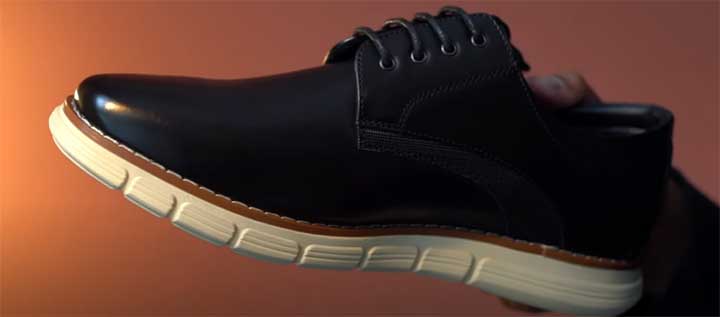
One major factor that keeps Bruno Marc shoes inexpensive is the brand’s reliance on factories in China for the vast majority of production. Labor rates are far lower in China than other manufacturing countries, especially developed Western nations.
By using extensive manual labor in China rather than more automated facilities elsewhere, Bruno Marc benefits from the dramatically lower worker wages. Chinese factory overhead like equipment, administration and facilities is also far cheaper.
China’s sprawling manufacturing sector creates economies of scale unmatchable in smaller countries too. Bruno Marc production benefits from the established supply chains, experienced workforce and dense supplier networks centered in China.
- Substituting Cheaper Synthetics for Premium Materials
High-end shoe brands invest in quality leathers, textiles and detailing that elevate aesthetics and comfort, but raise prices. Bruno Marc takes the opposite approach, substituting cheaper manmade materials whenever possible.
Polyurethane leather is used instead of genuine leather, cutting material costs drastically while providing the exterior look of leather. The polyurethane is easier to clean and maintain as well. shoes
Textiles like polyester and nylon mesh replace premium natural fibers like wool and linen. Though less soft and breathable, the synthetics keep prices affordable.
Plastic components stand in for metal hardware. Glues replace stitching where unseen. Every material switch lowers costs without sacrificing too much quality.
- Minimal Advertising Investment and Simple Web Marketing
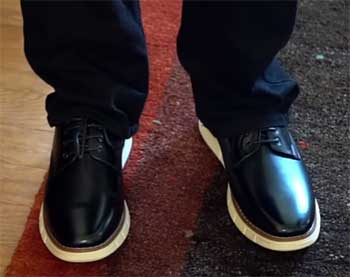
Shoemakers spend millions on celebrity sponsorships, television commercials, print ads in glossy magazines and New York billboards.
As an online-first brand, Bruno Marc skips these expensive traditional promotions.
Focusing digital marketing on core demographics allows maximization of limited budgets.
Search ads, social media content and influencer posts target the ideal value-driven male buyer. Email subscriptions and retargeting sustain interest.
A basic website and e-commerce backend replaces physical retail spaces. Savvy online presence builds brand recognition rather than prestige imagery and over-the-top creative. Light marketing improves margins.
- Classic Versatile Styles With Long-Lasting Appeal
Most major shoe brands churn out new on-trend looks every season to drive sales. Bruno Marc sticks to classic silhouettes with long-lasting appeal instead of chasing fleeting fashion fads.
Oxfords, monk straps, loafers, Chelsea boots and other heritage styles remain in demand year after year. Using the same patterns and materials avoids sinking costs into new designs.
These versatile shoes work for multiple use cases and occasions beyond short-lived trends. Long shelf lives mean efficient extended production runs rather than brief manufacturing cycles. It adds up to major savings.
Evergreen classic styles in black, brown and tan colors work season to season, saving resources otherwise spent on color and material variations. Limited looks simplify production.
- Direct Online Sales Remove Multi-Layer Retail Markups
Large shoe companies sell through various retailers, both independent stores and big chain outlets. Each middleman adds their own markup to cover overhead and profit margins.
By selling directly to consumers through their own e-commerce site, Bruno Marc avoids kickbacks to retailers. Shoes ship from warehouse straight to the buyer with no physical store costs involved.
Owning the entire distribution channel improves profit margins even when selling at lower price points. Direct sales also prevent shoes from sitting unsold at physical retail, taking up expensive inventory space.
Also Read: Why Are Pikolinos Shoes So Highly Priced?
- Constrained Variety Minimizes Component Inventories
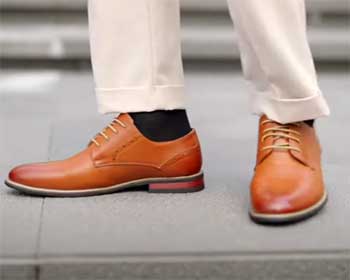
Most shoe brands offer each style in a myriad of colors, materials, textures and patterns.
This exponentially increases product variations and development costs.
Bruno Marc imposes variety constraints, offering most shoes in just a few neutral colors and standard materials.
Components are sourced only for core colors in a limited size range. No costs are wasted on custom materials.
Lower sourcing and inventory expenses from component commonality and scale volume savings further reduce overall costs. Assembly line changeovers are minimized as well.
In summary, Bruno Marc scrutinizes cost drivers across the entire production and distribution chain, then optimizes each area to enable affordable pricing. Prioritizing value over prestige and quality allows decent shoes at unusually low prices for the market.
Careful cost management paired with efficient Chinese manufacturing enables the discount pricing model. The brand succeeds in delivering satisfactory shoes at very inexpensive price points compared to competitors.
- Lower Costs Through Limited R&D Spending
Shoe brands investing heavily in research and design incur expenses from prototyping, materials testing, 3D modeling and acquiring shoe last templates. Bruno Marc skips these costs by mimicking existing classic shoe styles instead of designing new forms from scratch.
Relying on classic silhouettes that have existed for decades or even centuries eliminates the need for Bruno Marc to spend on original design conception and perfection. Existing patterns are sampled then put swiftly into production with minimal modifications. Bruno Marc leverages classic designs as-is rather than reinventing.
No costs are wasted engineering new proprietary technologies or production methods either. Bruno Marc utilizes widely available manufacturing techniques and off-the-shelf materials rather than custom high-tech solutions. Avoiding R&D and new product development reduces expenses.
- Focus on Lower-Price Animal Leather Alternatives
While Bruno Marc uses some genuine leather, much of its leather footwear utilizes cheaper animal leather substitutes rather than premium full-grain steer hides. Using bonded, corrected or faux leathers reduces material expenses.
Bonded leather is comprised of leather scraps fused together then coated for consistency. The composite material is cheaper than intact natural hides. Corrected grain leather undergoes processing to remove imperfections, improving surface appearance but lowering cost.
Faux leather like polyurethane can realistically emulate the look and feel of real animal leather at a fraction of the price. Bruno Marc maximizes use of these cost-effective leather alternatives in manufacturing.
- Limited Risk Taking With Proven Styles
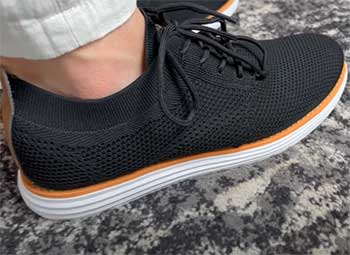
Major shoe companies pour resources into conceptualizing innovative new styles which may or may not resonate with consumers.
Bruno Marc steers clear of this risk, sticking to proven designs known to sell reliably despite fashion changes.
Oxfords, loafers, boots and other classic styles Bruno Marc focuses on have remained sought-after and on-trend for generations.
Sticking with silhouettes that have passed the test of time minimizes the possibility of getting stuck with unsold inventory.
Producing familiar styles in traditional colors like black and brown also ensures consistent demand. Choosing not to take risks with avant-garde designs reduces the likelihood of profit-damaging miscalculations.
Also Read: Is Cole Haan Better Than Wolf & Shepherd Shoes?
Frequently Asked Questions (FAQ)
Considering the budget pricing, Bruno Marc offers good style and quality. The shoes may not be top tier compared to expensive luxury brands, but Bruno Marc products meet expectations at the affordable price points.
Bruno Marc produces the significant majority of its shoes at factories in China in order to take advantage of lower labor rates and manufacturing costs. Some high-end Bruno styles may be made in Italy or Portugal, but most models are made in China.
Bruno Magli is a separate high-end luxury brand based in Italy using premier leathers and detailed construction. The quality and prices are far above Bruno Marc’s budget shoes. But Bruno Marc offers good quality for the inexpensive price range.
Bruno Marc is considered a good value shoe brand for shoppers wanting decent leather or synthetic shoes without premium designer pricing. While not top tier quality, Bruno Marc offers satisfactory styling, comfort and durability at very inexpensive price points.
Wrapping Up
In summary, Bruno Marc scrutinizes cost drivers across the entire production and distribution chain, then optimizes each area to enable affordable pricing. Prioritizing value over prestige and quality allows decent shoes at unusually low prices for the market.
Careful cost management paired with efficient Chinese manufacturing enables the discount pricing model. The brand succeeds in delivering satisfactory shoes at very inexpensive price points compared to competitors.

